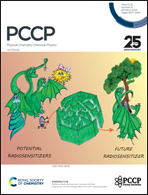Enhancing catalytic activity of Cr2O3 in CO2-assisted propane dehydrogenation with effective dopant engineering: a DFT-based microkinetic simulation†
Abstract
Using CO2 as a mild oxidizing agent in propane dehydrogenation (PDH) presents an attractive pathway for the generation of propene while maintaining high selectivity. Cr2O3 is one of the most important catalysts used for the CO2-assisted PDH process. In this study, the doping of Cr2O3 with single atoms such as Ge, Ir, Ni, Sn, Zn, and Zr was used for the PDH process. The introduction of dopants significantly modifies the electronic structure of pristine Cr2O3, leading to substantial alterations in its catalytic capabilities. The dehydrogenation reactions were explored both in the absence and presence of CO2. The addition of CO2 introduces two distinct pathways for PDH. On physisorbed CO2 surfaces, Ge and Ni–Cr2O3 enhance dehydrogenation. On the dissociated surface, the CO* and O* species actively participate in the reaction. All doped surfaces exhibit low energy barriers for dehydrogenation, except undoped Cr2O3 on dissociated CO2 surfaces. The Ni–Cr2O3 surface emerges as the most active surface for dehydrogenation of propane in all scenarios. Additionally, the catalytic surface is re-oxidized through H2 release, and doped surfaces facilitate coke removal via the reverse Boudouard reaction more efficiently than undoped Cr2O3. Microkinetics simulations identify the removal of the first H-atom as the rate-determining step. CO2 reduces the apparent activation energy, directly impacting C3H8 conversion and C3H6 formation. This study offers a decisive description of Cr2O3 modification for the CO2-assisted PDH process.



 Please wait while we load your content...
Please wait while we load your content...